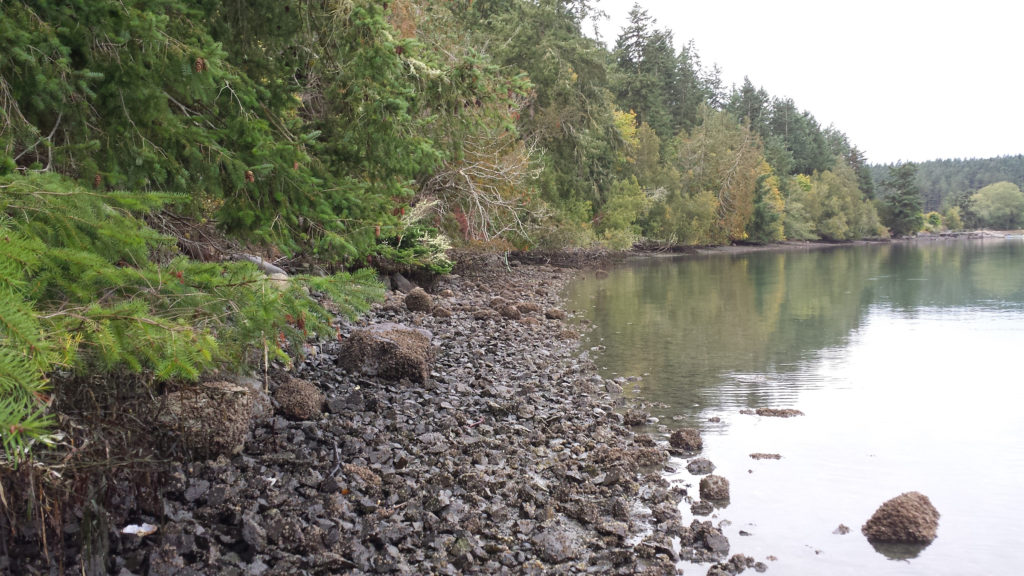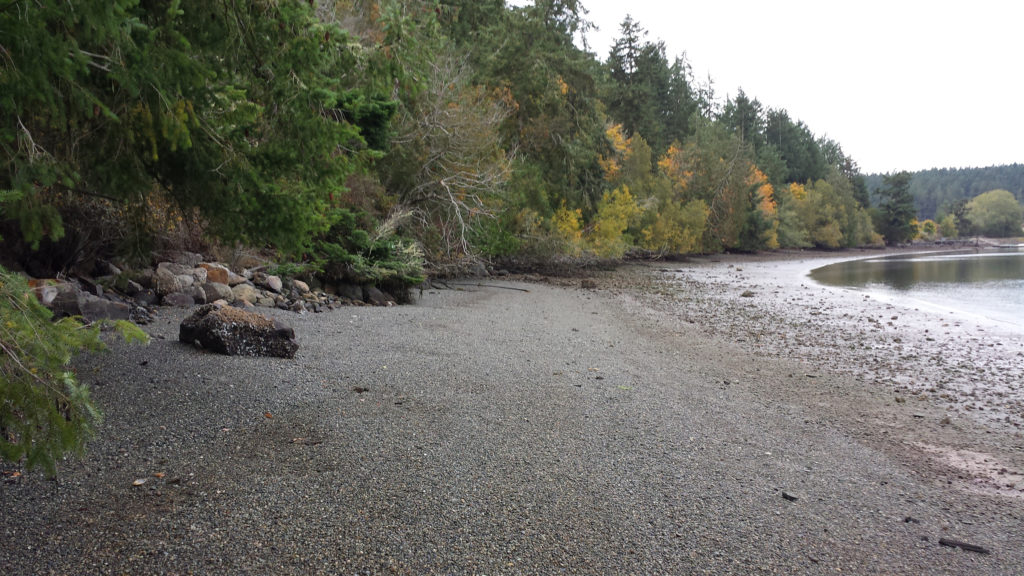Spawning habitat for the surf smelt, a small fish important in marine food webs, just got a whole lot better at a local beach thanks to the hard, and often muddy, work of public service organizations, contractors, landowners, community members and school kids. Over the past few weeks 600 linear feet of shoreline has been improved along Shaw Island’s Blind Bay, a priority forage fish spawning region in the county. The surf smelt that spawn year round on the beaches of Blind Bay require small gravel and sand to successfully incubate their tiny eggs. Friends of the San Juans led efforts to remove large angular rock that over the decades had fallen from armoring structures and covered large portions of the natural beach.
Work occurred at two locations along the bay, with different restoration methods. At one site, which hosted large volumes of rock slated for removal, Friends of the San Juans contracted with Shaner Excavating and Tree Service of Orcas Island to mobilize large equipment and mechanically remove about 120 cubic yards of large rock. A combination of sand and small gravel nourishment material, also known as ‘fish mix,’ was then brought in to restore suitable spawning substrate to the impacted beach.
At a second smaller site, with a much thinner layer of angular rock, Friends worked with a Washington Conservation Corps crew, Shaw School students, and community volunteers to enhance the spawning site. Over 6 cubic yards of rock were removed from the beach surface, unburying the naturally smaller grained beach below. The cleared rock was placed into large bags and will be picked up for upland disposal by Hardy Schmidt Excavation of Shaw Island.
“Participants from the Shaw School and the WA Conservation Corps were so inspiring- they were enthusiastic, really got the connection between beaches and species further up the food chain such as salmon, seabirds and whales, and worked incredibly hard to remove a lot of rock despite a wide range of weather conditions” noted Friends Science Director Tina Whitman.
Friends of the San Juans will continue its work with local students to monitor the site and document potential changes in the distribution, density or success of incubating surf smelt eggs. Special thanks to all the work crews, project designers at Coastal Geologic Services, and the multiple private landowners who participated in the project.
Funding for the project was provided by the Washington State Salmon Recovery Funding Board, The U.S. Fish and Wildlife Service, Washington Department of Fish and Wildlife and Friends members.


